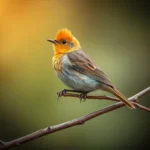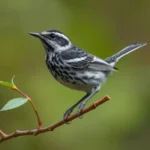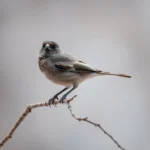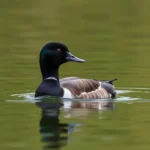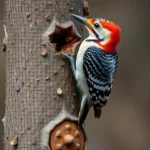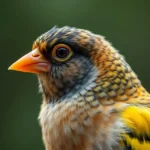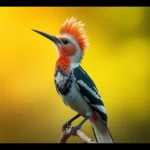The Whinchat: A Symbol of Transition and Adaptability
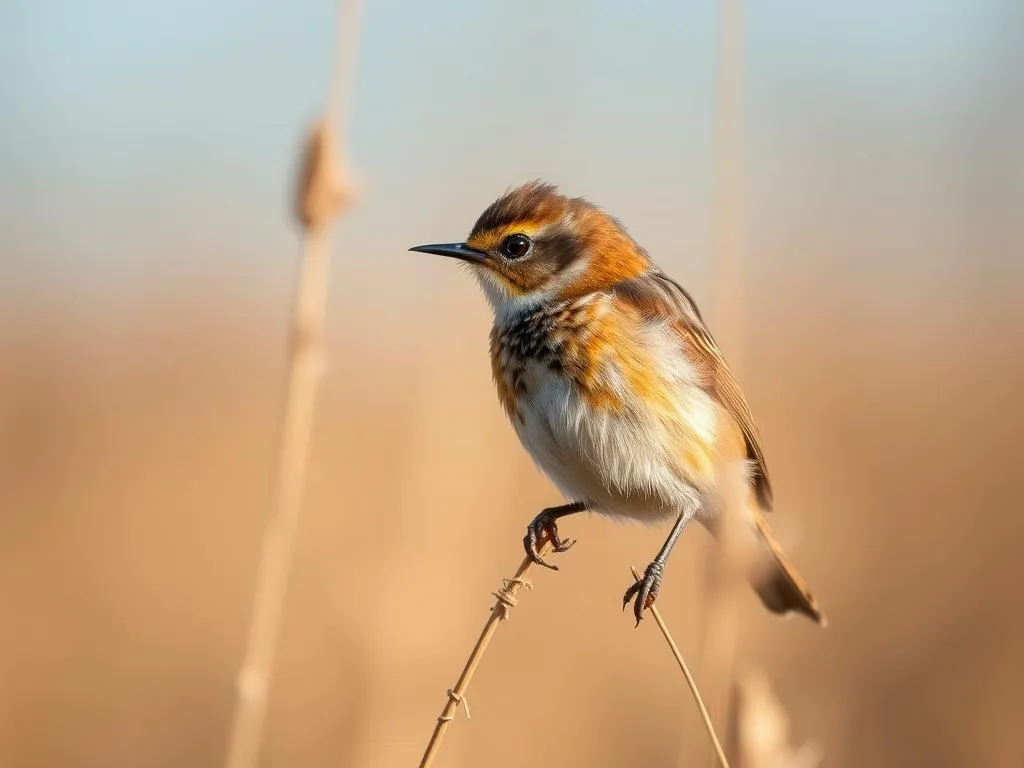
Disclaimer: Some images on this website are AI-generated artworks and may not accurately represent real animals.
Understanding the Whinchat
Physical Characteristics
The whinchat (Saxicola rubetra) is a small passerine bird that captivates observers with its unique features and behaviors. Here’s a detailed look at the whinchat’s physical characteristics:
| Feature | Description |
|---|---|
| Size | Approximately 12-13 cm in length |
| Color | Brownish-olive back, white underparts |
| Distinctive Features | Black crown, white wing bars, and a distinctive black line through the eye |
| Beak | Short and conical, ideal for insect-catching |
| Legs | Slim and relatively long |
The overall appearance of the whinchat is both charming and functional, allowing it to camouflage itself within its grassy habitat. Its subtle yet striking coloration not only plays a role in its survival but also adds to its cultural significance across various societies.
Habitat and Behavior
The whinchat primarily inhabits open grasslands, heathlands, and fields where it can find ample food sources. It prefers areas with low vegetation, which provides both shelter and visibility for hunting insects.
In terms of migratory behavior, the whinchat is a remarkable traveler. It breeds in Europe and parts of Asia before migrating to sub-Saharan Africa for the winter. This seasonal journey showcases its adaptability and resilience, making it a compelling subject for ornithologists and nature enthusiasts alike.
Socially, whinchats are often seen in pairs or small groups, especially during the breeding season. Their melodious calls and distinctive perching habits, often on tall grasses or fences, contribute to their charming presence in the landscape.
Cultural Significance
Across various cultures, the whinchat has held significant roles in folklore and natural history. Historically, its presence has been interpreted as a sign of good fortune, particularly in agrarian societies where its arrival heralded the changing seasons.
In local ecosystems, the whinchat plays a vital role as a predator of insects, contributing to the balance within its habitat. Its behaviors and seasonal movements have also made it a subject of study in the context of environmental changes and conservation efforts.
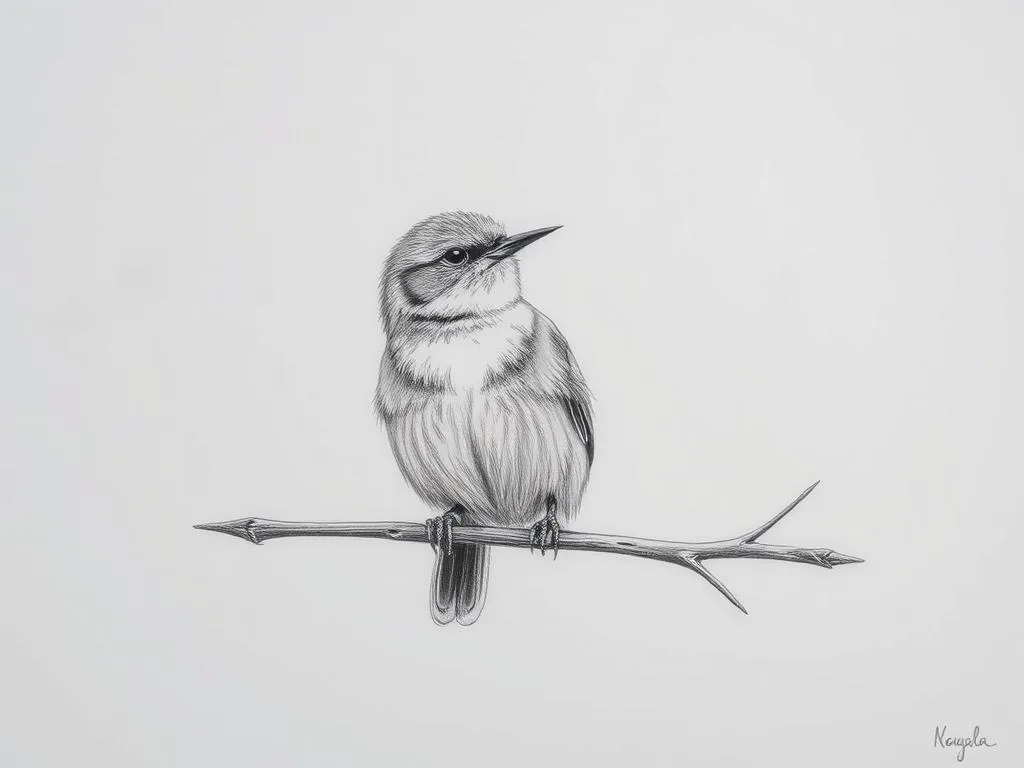
Symbolism & Spiritual Meaning
Adaptability and Change
The whinchat symbolism and meaning often center around themes of adaptability and change. As a migratory bird, the whinchat embodies the ability to navigate transitions in life, reminding us that resilience can lead to growth and new opportunities.
When we observe the whinchat, we are inspired to embrace the changes that life presents, rather than resist them. This bird serves as a poignant reminder that adaptability is not merely a survival mechanism but also a path to fulfillment and success.
Connection to Nature
The whinchat also symbolizes a deep connection to nature. Its existence highlights the intricate relationship between all living beings and the environment. As a messenger between the earthly and spiritual realms, the whinchat encourages us to listen to the whispers of nature.
In many spiritual traditions, birds are seen as messengers that convey messages from the divine. The whinchat, with its gentle presence, invites us to remain grounded and connected, serving as a bridge between the physical world and our higher selves.
Harmony and Balance
Another powerful aspect of whinchat symbolism is its association with harmony and balance. The bird’s ability to thrive in diverse environments reflects the importance of maintaining equilibrium in our own lives.
When we encounter the whinchat, whether in nature or through dreams, we are reminded to seek balance in our personal and professional spheres. This pursuit of harmony can lead to greater peace, happiness, and fulfillment.
Whinchat in Dreams
Interpretations of Whinchat Sightings
Dreaming of a whinchat can carry profound meanings. Here are some common themes associated with such dreams:
| Dream Theme | Interpretation |
|---|---|
| Transition | A signal that you are entering a new phase of life |
| Adaptability | Encouragement to embrace change and flexibility |
| Connection to nature | A reminder to reconnect with your surroundings |
| Communication | A sign to express yourself or listen to others |
These interpretations suggest that the whinchat serves as a guide in our subconscious, offering insight into our waking life challenges and transitions.
Messages from the Subconscious
The presence of the whinchat in dreams often points to personal transitions or changes one might be facing. If you find yourself dreaming about this bird, it may signify that you are at a crossroads or about to embark on a new journey.
This imagery encourages self-reflection and awareness of the changes occurring in your life. It can be a prompt to assess how you are coping with these transformations and whether you are open to the possibilities they may bring.
Guidance and Intuition
The whinchat can also symbolize guidance and intuition in our dreams. As a creature that thrives in various environments, it suggests that you possess the innate ability to navigate challenges and make wise decisions.
When the whinchat appears in dreams, it may be urging you to trust your instincts and rely on your inner wisdom. This connection to intuition can lead to emotional healing and clarity in decision-making.
Modern Interpretations
Symbol of Environmental Consciousness
In today’s society, the whinchat has emerged as a symbol of environmental consciousness. With growing concerns about climate change and habitat loss, the whinchat represents the need for awareness and action.
Many conservationists highlight the importance of protecting the natural habitats that support species like the whinchat. By understanding its migratory patterns and ecological role, we can better appreciate the interconnectedness of life and the urgent need for sustainable practices.
Cultural References
Contemporary references to the whinchat in literature, art, and media often emphasize its beauty and significance. Artists have depicted the whinchat as a symbol of change, resilience, and the beauty of nature.
Moreover, writers often use the whinchat as a metaphor for personal growth and adaptability. Its presence in various cultural narratives reinforces its role as a powerful symbol in our understanding of life and nature.
Personal Empowerment
Embracing the whinchat’s symbolism can inspire individuals to adapt and grow in their own lives. By recognizing the lessons that the whinchat embodies—such as resilience, connection to nature, and the pursuit of balance—we can empower ourselves to navigate the complexities of modern life.
In a world that is constantly changing, the whinchat encourages us to be proactive rather than reactive. By welcoming change and seeking harmony, we can cultivate a more fulfilling and purposeful existence.
Key Takeaways
- The whinchat symbolism and meaning emphasizes adaptability, resilience, and personal growth.
- Observing the whinchat encourages us to embrace change and seek balance in our lives.
- Connection with nature is vital, reminding us of our place within the larger ecosystem.
- The whinchat serves as a guide in dreams, offering insights into transitions and personal challenges.
- Recognizing the whinchat’s significance can foster environmental consciousness and personal empowerment.
Conclusion
The enduring symbolism of the whinchat resonates deeply within our lives today. As we navigate the complexities of modern existence, the lessons we learn from this remarkable bird—adaptability, resilience, and the importance of balance—become increasingly valuable.
Observing the natural world around us, particularly the whinchat, invites us to reflect on our own journeys and the changes we encounter. By embracing the wisdom of this bird, we can foster a deeper connection to both ourselves and the environment, ultimately leading to a more harmonious life.
